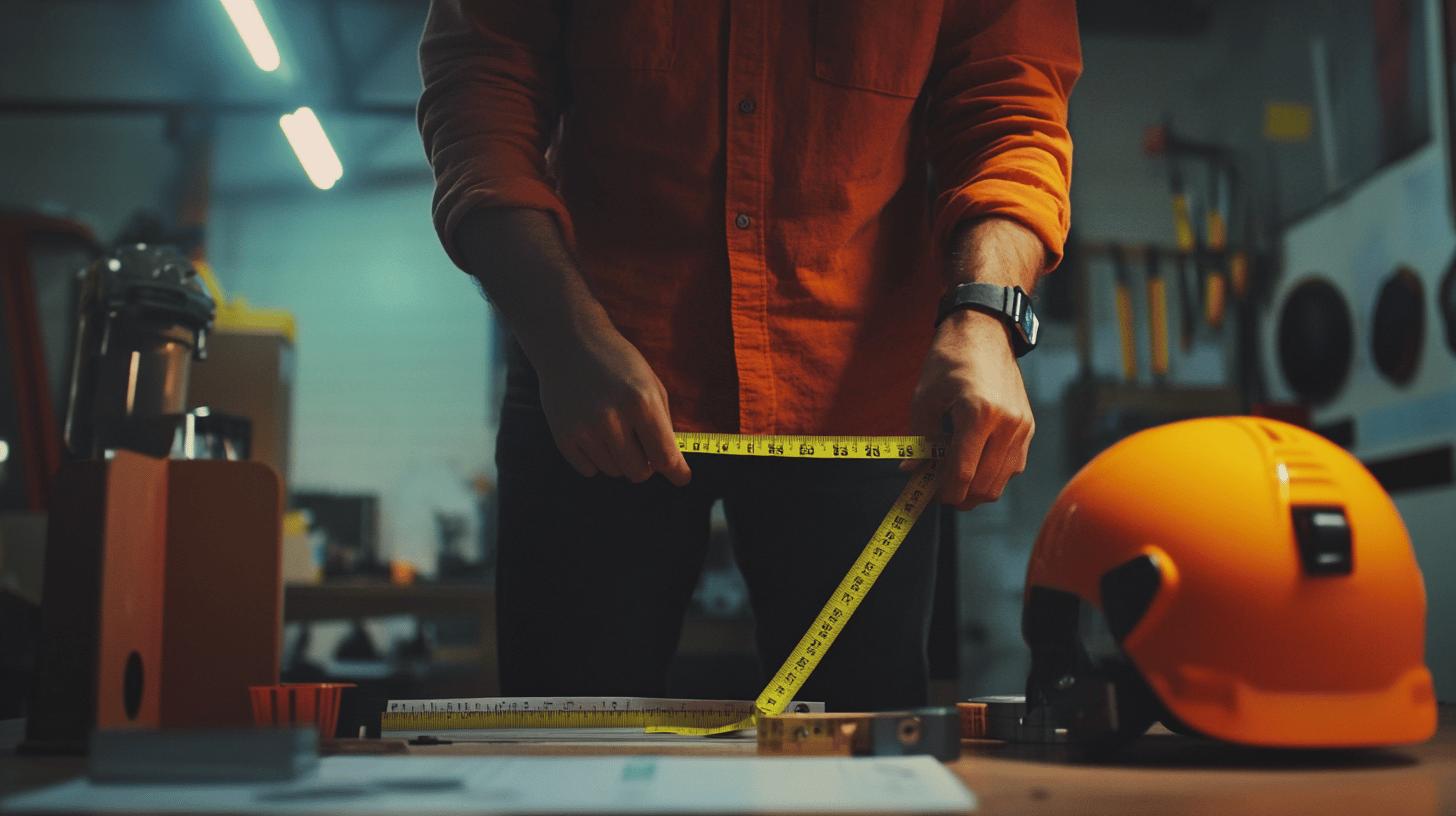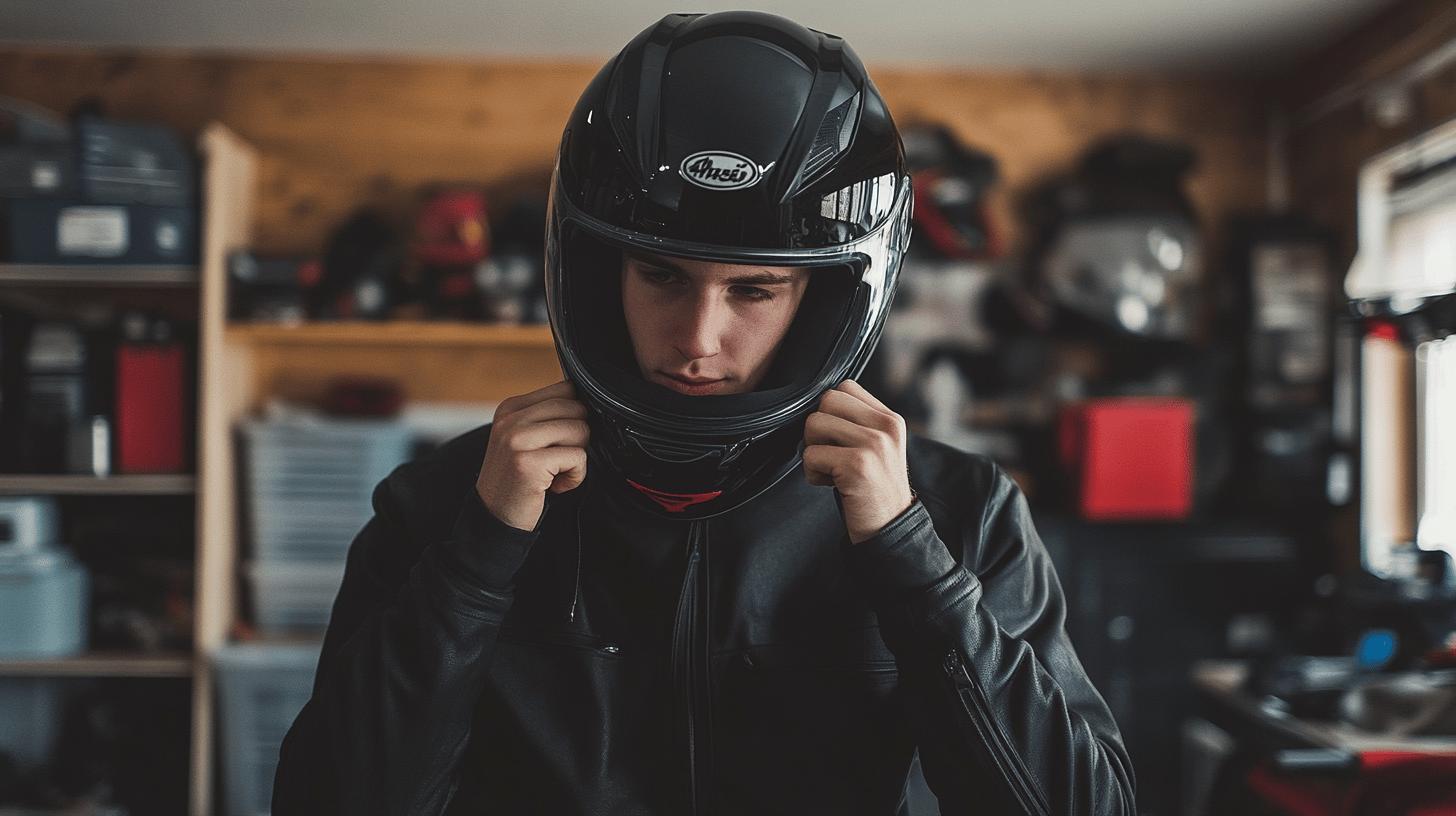Are you risking your safety with an ill-fitting motorcycle helmet? An accurately measured helmet is your best defense on the open road, offering both protection and comfort.
Knowing how to measure for a motorcycle helmet ensures you choose a helmet that fits you perfectly, reducing the risk of injury.
This step-by-step guide walks you through a precise measurement process, from wrapping the flexible tape around the widest part of your head to recording the exact circumference. Discover the essential steps needed to measure your head and secure the snug fit every rider needs.
Step-by-Step Guide on How to Measure for a Motorcycle Helmet

Accurate measurement is crucial for ensuring your motorcycle helmet fits properly, providing maximum protection and comfort. A helmet that fits well can significantly enhance safety by reducing the risk of injury during an accident. Here’s a step-by-step guide to measuring your head correctly for a motorcycle helmet.
- Gather Necessary Tools
Use a flexible measuring tape for the most accurate results. If you don't have a measuring tape, a string and a ruler can work as substitutes.
- Position the Tape Correctly
Wrap the measuring tape around the widest part of your head. This is typically about 1 inch above your eyebrows and ears, ensuring that the tape is level and not too tight or loose.
- Record the Measurement
Make sure to note the measurement in both centimeters and inches, as helmet sizes are often provided in both units. This will help when comparing sizes across different brands.
- Repeat for Accuracy
Measure at least twice to confirm consistency. Slight variations can occur, so averaging your measurements can provide a more reliable figure.
- Consult Manufacturer Size Charts
Once you have your head circumference, compare it with the size chart of the helmet manufacturer. This will help you choose the correct size, as sizes can vary between brands.
Precise measurement is the foundation of selecting a helmet that not only fits snugly but also enhances safety and comfort. A well-fitted helmet should feel secure without causing any pressure points, ensuring clear vision and full protection while riding.
Understanding and Using Helmet Size Charts

Helmet sizes can vary significantly across brands, making it essential to use a motorcycle helmet sizing guide tailored to each manufacturer. This variability occurs because each brand may have different design parameters, affecting how a helmet fits based on the same head circumference. Therefore, accurately comparing your head measurement to the helmet size chart provided by the specific brand you are considering is crucial to finding the perfect fit.
Below is a table that compares helmet sizes from various manufacturers, helping you to understand how the same head measurement might translate into different sizes.
| Brand | Size in cm | Size in inches |
|---|---|---|
| Brand A | 56-58 | 22-22.8 |
| Brand B | 55-57 | 21.7-22.4 |
| Brand C | 57-59 | 22.4-23.2 |
| Brand D | 58-60 | 22.8-23.6 |
When determining your helmet size, it's imperative to reference these brand-specific size charts. This ensures that the helmet you choose not only aligns with your head circumference but also conforms to the unique design and fit characteristics of the brand. By doing so, you can achieve an accurate fit that maximizes both comfort and safety while riding.
Tips for Ensuring a Proper Helmet Fit

A correct helmet fit is indispensable for safety, reducing the chance of injury during a crash by ensuring the helmet stays securely in place. A well-fitting helmet not only protects but also enhances riding comfort, allowing the rider to focus on the road ahead without distraction.
- Snugness Test
The helmet should fit snugly around your head without being excessively tight. If the helmet moves independently when you shake your head, it is too loose.
- Pressure Point Check
Wear the helmet for a few minutes to identify any pressure points. Discomfort indicates a poor fit, which can lead to headaches and reduced concentration while riding.
- Vision Clearance
Ensure the helmet does not obstruct your vision. The eye port should provide a wide field of view, accommodating both peripheral and direct sight.
- Cheek Pad Fitment
Cheek pads should touch your cheeks without causing discomfort. They should apply gentle pressure, ensuring the helmet remains stable during movement.
- Chin Strap Security
Fasten the chin strap snugly. You should be able to fit no more than two fingers between the strap and your chin for optimal safety.
- Brand Variability Consideration
Different brands have varying sizing and fit standards. Trying on helmets from multiple manufacturers can help identify which brand suits your head shape best.
- EPS Liner Alignment
The EPS liner should mold to your head’s natural shape, providing uniform pressure distribution and enhancing impact absorption.
Riding comfort and safety are closely linked to a helmet's fit. A properly fitted helmet minimizes distractions and ensures full protection if an accident occurs. Prioritizing fitment not only boosts confidence but also enhances the overall riding experience.
The Impact of Head Shape on Helmet Fit

Head shape is a critical factor in selecting a motorcycle helmet that offers both comfort and protection. Knowing your head shape helps in choosing a helmet that molds perfectly to your head, minimizing pressure points and enhancing safety.
- Long Oval
This shape is longer front to back and narrower side to side. Helmets designed for a long oval shape prevent pressure at the forehead and back of the head.
- Intermediate Oval
The most common shape, intermediate ovals are slightly longer from front to back than side to side. Helmets for this shape provide balanced pressure distribution.
- Round
Round heads are almost equal in length and width. Helmets catering to this shape reduce side pressure and offer a snug fit around the crown.
Before purchasing a helmet, determine your head shape by examining your head's profile in a mirror or with the help of a friend. This assessment ensures you select a helmet that fits well, providing optimal protection and comfort on every ride.
Common Helmet Sizing Mistakes and How to Avoid Them

Choosing the right helmet size is a crucial step for safety and comfort. A common mistake is selecting a helmet that's too loose. This error can lead to a poor fit, increasing the risk of the helmet rolling off during a crash.
Helmets should fit snugly without being overly tight, as excessive tightness can cause discomfort and headaches. Helmets with enhanced padding might feel tighter initially, but they offer better protection by absorbing impacts more effectively.
- Mistake: Choosing a Loose Helmet
Solution: Opt for a snug fit, ensuring the helmet doesn't move independently when you shake your head.
- Mistake: Ignoring Initial Tightness
Solution: Allow for a break-in period; padding will conform to your head shape over time, enhancing comfort.
- Mistake: Relying Solely on Manufacturer's Size Tag
Solution: Always try on helmets, as sizing can vary between brands and models.
- Mistake: Overlooking Chin Strap Adjustment
Solution: Secure the chin strap so only two fingers fit between the strap and your chin.
- Mistake: Neglecting Head Shape Consideration
Solution: Identify your head shape (long oval, intermediate oval, round) and select a helmet designed for that shape.
Correcting these common sizing mistakes is essential for maximizing safety. A helmet that fits well not only stays in place during a crash but also enhances overall riding confidence, providing peace of mind on the road.
Final Words
Mastering the art of how to measure for a motorcycle helmet is fundamental for safety and comfort. Accurate measurements ensure optimal protection, with steps outlined for precision.
Comparing size charts from different brands aids in finding the perfect match. A snug fit without pressure points or vision obstruction is crucial, influenced by individual head shapes.
Avoiding common fit mistakes enhances safety. Prioritize these guidelines for a secure and enjoyable riding experience.
FAQ
How do I know what size motorcycle helmet I wear?
A: Measure your head's circumference using a flexible tape. Wrap it around the widest part, about 1 inch above eyebrows. Compare this measurement with a manufacturer's size chart for accuracy.
What size helmet do I need for a 22-inch head?
A: For a 22-inch head, refer to the manufacturer-specific size chart. Typically, a 22-inch measurement correlates to a size small. Double-check with the brand's chart for precise sizing.
How do I measure my head size for a helmet without a tape?
A: Use a string instead of a measuring tape. Wrap it around the head at the widest point, then measure the string with a ruler to determine head circumference.
How to determine head shape for a motorcycle helmet?
A: Identify head shape by observing the length and width. Common shapes include long oval, intermediate oval, and round. Understanding this helps in choosing a helmet minimizing pressure points.
How do I find helmet size in a helmet?
A: Helmet size is often labeled inside, usually on the comfort liner or strap. Check these areas for a size tag or print.
What are motorcycle helmet sizes for adults?
A: Adult helmet sizes vary by manufacturer but are generally categorized from XS to XXL. Sizes align to head circumferences typically ranging from 20 to 25 inches in inches, or 51 to 64 centimeters.

Mark Anderson is a trusted expert with over 25 years of riding experience. At 56, his deep knowledge of long-distance touring and participation in major motorcycle rallies makes him a reliable source for gear recommendations on ProtectiveGearz. Mark’s decades of firsthand experience ensure his advice is authoritative and valuable to riders seeking expert guidance.



